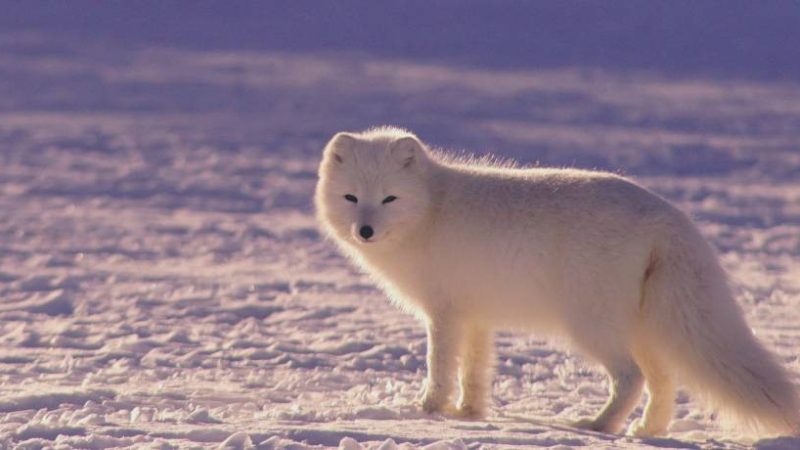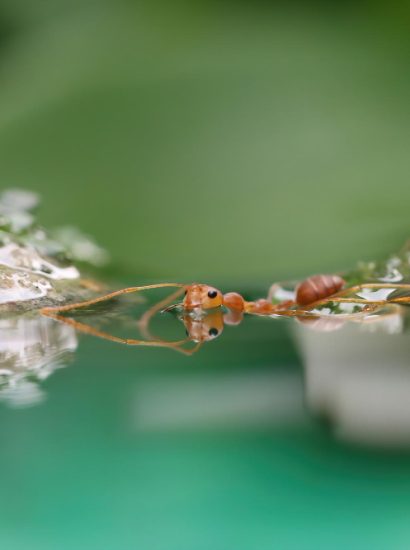The Arctic is a land of extremes, where harsh winters and freezing temperatures dominate the environment. Despite these harsh conditions, numerous animals have adapted to survive and even thrive in one of the coldest places on Earth. The region’s unique ecosystem supports a variety of life, from giant predators to small, hardy creatures. In this article, we will explore ten majestic creatures that call the Arctic home and learn how they have adapted to the cold. So, what animals live in the Arctic, and how do they manage to endure the harshest winters? Let’s dive into the fascinating world of Arctic wildlife.
What Animals Live in the Arctic: Polar Bears: The Majestic Apex Predators
When we think of the Arctic, one of the first animals that come to mind is the polar bear. These magnificent creatures are known for their ability to survive in freezing temperatures. Adapted to their environment, polar bears have a thick layer of blubber beneath their fur, keeping them insulated against the cold. They are also skilled swimmers, often traveling long distances across the sea ice in search of food, particularly seals. Their large paws help them tread on ice, and their sharp claws allow them to grip onto slippery surfaces. Polar bears are considered one of the most iconic examples of Arctic wildlife. So, when pondering what animals live in the Arctic, polar bears undoubtedly lead the way.
Arctic Fox: The Master of Survival
The Arctic fox is another animal perfectly suited to life in extreme cold. With its thick, white fur that blends into the snowy landscape, the Arctic fox is a skilled hunter and scavenger. It preys on smaller animals, such as lemmings, birds, and even fish, while also scavenging carcasses left behind by larger predators.
The Arctic fox is a true survivor, able to withstand temperatures as low as -58°F (-50°C). Its fur not only keeps it warm but also changes color with the seasons, transitioning from white in the winter to brown or gray in the summer.
Snowy Owl: The Silent Hunter
The snowy owl is a striking bird known for its white feathers and powerful hunting abilities. This bird of prey is well-adapted to the Arctic’s cold, with feathers that provide excellent insulation, keeping it warm even during the frigid winter months. Snowy owls are nocturnal hunters, primarily feeding on small mammals like lemmings and voles. Their keen eyesight and silent flight allow them to catch prey in the darkest hours of the night. Snowy owls are often found in the northernmost regions of the Arctic, where they nest on the ground in the tundra. If you’re wondering what animals live in the Arctic, the snowy owl is certainly a majestic and key player in the ecosystem.
Walruses: The Gentle Giants of the Arctic
Walruses are large, blubbery marine mammals that are often associated with the icy shores of the Arctic. These impressive creatures are easily recognizable due to their long tusks and thick, wrinkled skin. Walruses spend much of their time in the water, but they haul themselves out onto ice floes and beaches to rest, socialize, and give birth. Their diet consists mainly of benthic invertebrates, such as clams and snails, which they find by using their sensitive whiskers.
Walruses have a social nature and live in large groups called herds, sometimes numbering in the thousands. As such, they are one of the most iconic animals in the Arctic ecosystem. When you ask what animals live in the Arctic, walruses certainly belong on the list.
Arctic Wolves: The Wild Pack Hunters
Arctic wolves are a subspecies of the gray wolf, and they are specially adapted to survive in the extreme cold of the Arctic. With thick fur coats and a keen sense of smell, these wolves hunt in packs to bring down prey such as caribou and musk oxen. Their fur, which is dense and insulating, keeps them warm in temperatures that can plunge well below freezing. Arctic wolves also have larger paws than other wolves, which help them navigate through deep snow. These apex predators play a critical role in maintaining the balance of the Arctic ecosystem. So, what animals live in the Arctic? Arctic wolves are undoubtedly an essential part of the food chain.
Caribou: The Majestic Tundra Migrations
Caribou, also known as reindeer in some regions, are large herbivores that roam the Arctic tundra in vast herds. These animals are perfectly suited to cold climates with thick fur coats that provide insulation against the elements. Caribou are known for their incredible migrations, sometimes traveling thousands of miles in search of food. They feed on lichens, grasses, and shrubs that grow in the Arctic. During the winter, caribou have evolved to grow hooves that allow them to dig through the snow to reach their food. The sight of a caribou herd migrating across the Arctic landscape is one of nature’s most remarkable spectacles. So, when wondering what animals live in the Arctic, caribou are essential residents.
What Animals Live in the Arctic: Beluga Whales: The Arctic’s Friendly Giants
Beluga whales are marine mammals that live in the Arctic and sub-Arctic regions. These whales are often referred to as “canaries of the sea” due to their wide range of vocalizations, which they use to communicate with each other. Belugas have a thick layer of blubber that keeps them warm in cold waters, and their white color helps them blend in with the icy surroundings. They are highly social creatures, living in pods that can range from a few individuals to hundreds. Belugas feed on fish, crustaceans, and other marine creatures, and they are known for their playful behavior. Beluga whales exemplify how even the most gentle creatures can thrive in the Arctic’s harsh environment.
Musk Oxen: The Hardy Grazers of the Tundra
Musk oxen are large, shaggy herbivores that graze on the tundra. They are well adapted to the Arctic’s extreme cold, with thick coats of fur and a dense undercoat that helps them retain heat. Musk oxen are known for their strong, curved horns and their ability to survive in the harshest conditions. They live in groups, known as herds, and are particularly resilient during the winter months. Musk oxen feed on grasses, moss, and lichens, and they use their powerful hooves to dig through the snow to find food. They are one of the most impressive survivors in the Arctic, and when asking what animals live in the Arctic, musk oxen are certainly a key part of the ecosystem.
What Animals Live in the Arctic: Narwhals: The Unicorns of the Sea
Narwhals are one of the most fascinating and mysterious creatures of the Arctic. Known for their long, spiral tusks, narwhals are a species of whale that live in the cold waters of the Arctic. The tusk, which is actually an elongated tooth, can grow up to 10 feet long and is thought to play a role in mating rituals and social interactions. Narwhals are well adapted to life in icy waters, using their tusks to break through thin ice in search of food. These whales primarily feed on fish and squid. The narwhal’s unique appearance and mystical nature make it one of the most intriguing animals of the Arctic.
What Animals Live in the Arctic: Seal Species: The Arctic’s Playful Marine Mammals
The Arctic is home to several species of seals, including the harp seal, ringed seal, and bearded seal. These seals have thick layers of blubber that protect them from the cold, and their fur provides additional insulation. Seals are well adapted to life in the icy waters of the Arctic, where they spend much of their time hunting for fish and other marine creatures. They are skilled swimmers, able to dive to great depths in search of food. Seals are also known for their playful nature and are often seen frolicking on the ice or swimming in the open water. As such, seals are a vital part of the Arctic ecosystem.
Conclusion
The Arctic is a land of contrasts, with extreme cold temperatures and beautiful, expansive ice fields. Despite the harsh environment, the region is home to a wide variety of animals that have adapted to thrive in such conditions. From the mighty polar bear to the mysterious narwhal, the Arctic’s wildlife is nothing short of awe-inspiring. Whether on land or in the sea, the animals of the Arctic are a testament to the power of nature and the resilience of life. So, when wondering what animals live in the Arctic, the creatures we’ve explored in this article offer just a glimpse into the magnificence of this frozen world.
FAQs
Q1.What animals live in the Arctic?
The Arctic is home to several unique species, including polar bears, Arctic foxes, snowy owls, walruses, and narwhals. These animals have adapted to survive in the freezing temperatures of the region.
Q2.How do Arctic animals survive the cold?
Arctic animals have evolved a variety of adaptations to survive the cold, including thick fur, blubber, and larger body sizes. Many also have specialized behaviors, such as migration, to help them cope with extreme temperatures.
Q3.Are there any Arctic animals that migrate?
Yes, several Arctic animals migrate, including caribou and certain bird species. They travel vast distances in search of food and more favorable living conditions.
Q4.What is the most iconic animal in the Arctic?
The polar bear is often considered the most iconic animal of the Arctic due to its size, strength, and ability to survive in the region’s harsh conditions.
Q5.How are Arctic animals threatened by climate change?
Climate change is threatening Arctic animals by causing the melting of sea ice, which disrupts their habitats and food sources. Many species, like polar bears, rely on sea ice for hunting and breeding.
Also read: Fluffy Flowers: 10 Stunning Varieties That Will Transform Your Garden









